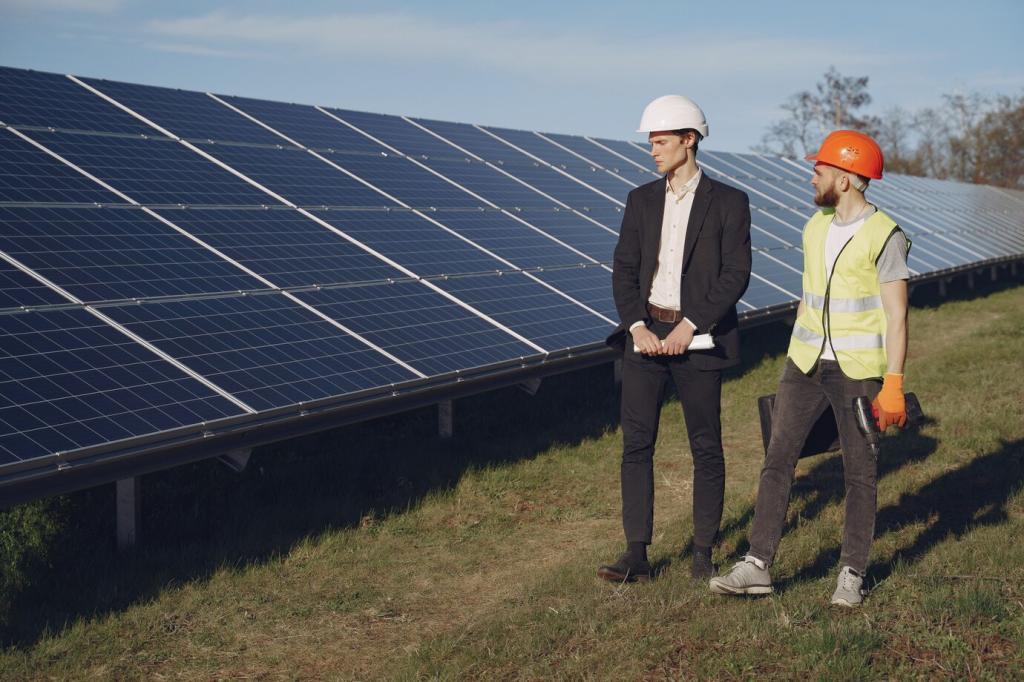
Sustainable Business Practices with Renewable Energy
Sustainable business practices that leverage renewable energy are increasingly becoming a cornerstone of modern organizations striving to reduce their environmental footprint. By integrating renewable energy sources such as solar, wind, and hydroelectricity, businesses can achieve greater efficiency, meet the expectations of eco-conscious customers, and ensure long-term profitability. This approach not only aligns with global efforts to combat climate change but also enhances reputation, secures regulatory compliance, and opens up new market opportunities. Embracing renewable energy is more than an ethical decision—it is a strategic move that shapes the future of sustainable commerce.
The Importance of Renewable Energy in Business
Environmental Impact and Corporate Responsibility
Transitioning to renewable energy significantly reduces a company’s carbon emissions and reliance on fossil fuels. Corporations that prioritize clean energy showcase their commitment to environmental stewardship, which goes beyond compliance and signals true dedication to sustainable growth. This proactive approach not only minimizes pollution but also supports the preservation of natural resources for future generations. Increased adoption of solar panels, wind turbines, and other renewables demonstrates leadership and vision, inspiring other businesses and industries to make similar changes. The positive ripple effect extends beyond company boundaries, influencing supply chains, communities, and stakeholders. By championing renewable energy, companies fulfill their corporate social responsibility while positioning themselves as agents of positive change on a global scale.
Regulatory Compliance and Future-Proofing Operations
Government regulations and international agreements, such as the Paris Agreement, are pushing industries to lower their greenhouse gas emissions. Adopting renewable energy practices ensures compliance with these evolving policies, helping businesses avoid fines, restrictions, and reputational damage. Furthermore, as renewable technologies become more accessible and cost-effective, early adopters gain a competitive edge, reducing operational risks associated with energy price volatility and future legislative shifts. Investing in sustainable energy infrastructure today protects companies from unpredictable disruptions, making operations more adaptive and resilient to emerging environmental mandates. By prioritizing renewable energy, businesses future-proof their models and maintain the agility needed to succeed in a rapidly changing regulatory landscape.
Enhancing Brand Reputation and Customer Engagement
Aligning business operations with renewable energy reflects positively on a company’s public image, offering a unique value proposition to environmentally conscious consumers. Modern customers are increasingly discerning, favoring brands that demonstrate a tangible commitment to sustainability. Integrating renewables into business practices not only differentiates a company from its competitors but also strengthens customer loyalty and advocacy. Transparent communication about renewable energy initiatives builds trust and attracts new audiences who prioritize eco-friendly practices. Over time, a strong reputation for sustainability creates long-term brand equity, enhances recruitment of like-minded talent, and secures partnerships with organisations that share the same environmental values.
Redesigning Operations for Energy Efficiency
A successful transition to renewable energy begins with evaluating and redesigning operational processes to maximize energy efficiency. Businesses must assess existing systems, identify areas of excessive consumption, and implement measures such as building automation, upgraded equipment, and improved insulation. By integrating renewable energy sources like solar panels or wind turbines into daily operations, companies can optimize energy use, lower costs, and reduce waste. Energy-efficient practices prioritize conservation, allowing renewable investments to yield higher returns. Continuous monitoring and data analysis enable organizations to fine-tune operations further, ensuring that sustainability goals are achieved consistently and effectively. The result is a seamless blend of renewable energy and operational excellence, delivering economic and environmental benefits.
Financing and Incentivizing Renewable Investments
One of the main challenges businesses face in adopting renewables is securing adequate financing and understanding available incentives. Thankfully, numerous government grants, tax credits, and green financing options exist to offset initial investment costs. Establishing partnerships with energy service companies and financial institutions can help companies access innovative payment structures, such as power purchase agreements or leases. These approaches mitigate upfront capital requirements while ensuring long-term financial savings. Additionally, transparently reporting renewable investments can attract impact investors and shareholders who value sustainability, further enhancing growth prospects. Well-structured financing not only accelerates the transition but also ensures the economic viability and scalability of renewable energy initiatives across all business units.
Developing a Culture of Innovation and Sustainability
Long-term success with renewable energy hinges on cultivating a company-wide culture that embraces innovation and sustainability. This involves ongoing education, training programs, and the empowerment of employees to adopt green thinking in their daily tasks. Encouraging cross-departmental collaboration generates creative solutions, from product development to supply chain optimization, that amplify renewable energy’s benefits. Recognizing and rewarding employee contributions fosters engagement and drives collective progress toward sustainability objectives. An embedded culture of innovation positions companies as pioneers in their industries, enabling them to anticipate trends and lead the shift to a more sustainable, energy-conscious business environment.
Previous slide
Next slide

Overcoming Challenges in Renewable Energy Adoption
The successful implementation of renewable energy often requires significant upgrades to existing infrastructure. Legacy buildings and processes may not be compatible with modern renewable technologies, necessitating complex modifications or replacements. Navigating these technological challenges demands thorough assessments and a phased approach to integration, ensuring minimal disruption to operations. Collaborating with industry experts, engineers, and technology providers can streamline the retrofit process and identify the most suitable renewable solutions. Investing in smart energy management systems enhances interoperability between conventional and new systems, enabling companies to optimize energy flow and maximize returns on renewable investments. Commitment to ongoing infrastructure improvement positions businesses to adapt as technology evolves and expands.
The pace of renewable energy adoption is influenced by fluctuating market dynamics and evolving government policies. Unpredictable energy prices, changing subsidy frameworks, and regional differences in regulation can introduce risk and uncertainty. Companies must stay informed about legislative developments and market trends to make well-timed, strategic decisions. Diversifying energy portfolios, securing long-term supply contracts, and engaging with policymakers can help businesses stabilize energy costs and navigate regulatory shifts. Scenario planning and risk assessments enable companies to anticipate potential disruptions and establish contingency strategies. Embracing adaptability helps organizations overcome market uncertainties and maintain steady progress in their sustainability journey.
For global businesses, supply chains present both opportunities and challenges when it comes to renewable energy integration. Coordinating sustainability efforts across geographic boundaries, diverse partners, and varying regulations requires robust planning and clear communication. Establishing shared sustainability standards and working closely with suppliers ensures consistent adoption of renewable practices throughout the value chain. Leveraging digital tools and tracking systems enhances transparency and accountability, allowing businesses to monitor energy usage and measure progress. By fostering supplier engagement and supporting capacity-building initiatives, companies can create resilient, future-ready supply chains fully aligned with renewable energy goals.

